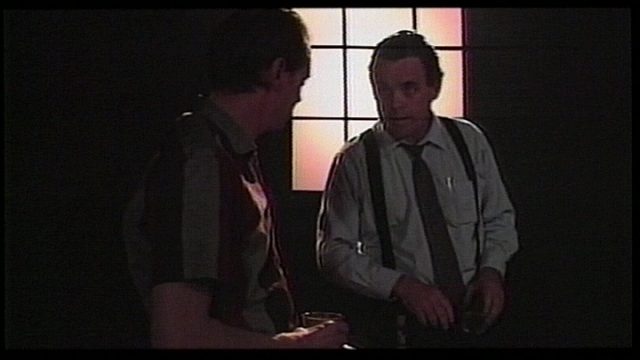Reservoir Dogs (1991) dir. Quentin Tarantino
Work watching warning: Some Tarantino-esque fuckin’ language, motherfucker.
Today’s link is a little different from other early works by future notable directors. This was created as a proof of concept/practice run for Tarantino’s first* the feature film Reservoir Dogs. That film existed only as a script at this point, a script that impressed Harvey Keitel enough to put his name on it as producer and agree to play a role. This experiment, as the title card points out, was set up as part of the Sundance Institute Film Lab in 1991, a year before the feature version would get made and two years after Sundance grew into the main driver of the 90s indie boom with the big sale of Sex, Lies and Videotape. Apparently Tarantino’s mentor at the lab was Terry Gilliam.
The script is the star here, and the rest of the production emphasizes that. It’s shot on videotape with sound that echoes against the sparse sets. The production design seems like an in-joke – surely it would have been easier to find a real copy of The Bell Jar than glue on that black-and-white cover. The casting hasn’t been nailed down. Steve Buscemi would be in the feature as well, though shuffled to the role of Mr. Pink (here he’s credited as Mr. Orange, the Tim Roth role the next year). And now we can imagine if Tarantino had played Mr. White! Keitel was probably the right call for the role in the end.
There’s also some interesting choices – the long wide that starts the second scene, for example, but little by way of the directorial flair of the finished product. The interesting thing about “Reservoir Dogs” vs. Reservoir Dogs is what it reveals about the distance between the idea and a fully professional product. Budget helps, of course, but so do the contributions and expertise of a crew that can realize camera movements, actors that can hit all the notes of musical lines, and some clean audio engineering.
It’s not that different than the early digital student films that would be common in the late 90s and early 2000s. Of course, those films were imitating the dialog cadence and hard-edge content of Tarantino’s films, where this is on the verge of creating that style. Tropes and trends only seem to appear overnight.
* Depending on how you count “My Best Friend’s Birthday,” a 1987 shoestring film that was feature length until a fire burned it down to 37 minutes.

